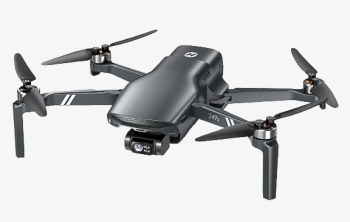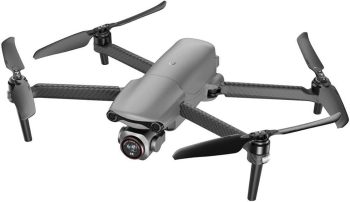- Affordable price
- User-friendly features
- Good camera quality
- High-definition video
- Durable design
- Advanced safety features
- Limited flight time
- Basic obstacle avoidance
- Limited battery life
- Higher price point
Holy Stone HS720E vs Autel Robotics EVO Lite+
The world of quadcopters has witnessed significant advancements in recent years, with numerous models offering exceptional features and capabilities. In this comparison, we will delve into the details of two prominent quadcopters: the Holy Stone HS720E and the Autel Robotics EVO Lite+. Both devices have garnered attention for their impressive specifications, but which one stands out as the superior choice?
Design and Build Quality
The Holy Stone HS720E boasts a compact and lightweight design, weighing in at approximately 710 grams. Its foldable arms and propellers make it an ideal choice for travelers and outdoor enthusiasts. The device's body is constructed from high-quality plastic, ensuring durability and resistance to minor crashes.
In contrast, the Autel Robotics EVO Lite+ features a more robust and sleek design, with a weight of around 1179 grams. Its aerodynamic shape and sturdy construction make it well-suited for capturing high-quality footage in various environments. The EVO Lite+ also has foldable arms, but its overall size is slightly larger than the HS720E.
Camera Capabilities
The Holy Stone HS720E is equipped with a 4K UHD camera, capable of capturing stunning aerial footage at 30 frames per second. The device also features electronic image stabilization (EIS), which helps to reduce camera shake and blur. However, the HS720E's camera lacks a mechanical gimbal, which may affect its overall stability and image quality.
The Autel Robotics EVO Lite+, on the other hand, boasts a 50MP camera with a 1/1.28-inch CMOS sensor, capable of capturing 5.3K video at 30 frames per second. The device also features a 3-axis mechanical gimbal, which provides exceptional stability and smoothness to the captured footage. Additionally, the EVO Lite+ supports 10-bit HDR and HLG (Hybrid Log-Gamma) recording, making it an attractive choice for professional videographers.
Flight Performance
Both quadcopters offer impressive flight capabilities, but the Autel Robotics EVO Lite+ takes the lead in terms of speed and agility. The device can reach a maximum speed of 45 mph (72 km/h) and has a climbing rate of 15 m/s. In contrast, the Holy Stone HS720E has a top speed of 25 mph (40 km/h) and a climbing rate of 5 m/s.
The EVO Lite+ also features advanced obstacle avoidance systems, including dual-band GPS, GLONASS, and BEIDOU navigation. This enables the device to maintain a stable and safe flight path, even in complex environments. The HS720E, while still equipped with GPS and obstacle avoidance, lacks the same level of sophistication as the EVO Lite+.
Battery Life and Range
The Holy Stone HS720E has a maximum flight time of approximately 23 minutes, thanks to its 2800mAh battery. The device's transmission range is around 3 miles (4.8 kilometers), providing a decent amount of freedom for pilots to explore their surroundings.
In comparison, the Autel Robotics EVO Lite+ offers an impressive 40-minute flight time, courtesy of its 4280mAh battery. The device's transmission range is also more extensive, reaching up to 7.5 miles (12 kilometers). This makes the EVO Lite+ a better choice for those who need to cover larger areas or require more extended flight sessions.
Conclusion
In conclusion, both the Holy Stone HS720E and the Autel Robotics EVO Lite+ are exceptional quadcopters that cater to different needs and budgets. While the HS720E offers a more affordable price point and compact design, the EVO Lite+ excels in terms of camera capabilities, flight performance, and battery life.
If you're a professional videographer or require high-quality footage for commercial purposes, the Autel Robotics EVO Lite+ is likely the better choice. However, if you're a hobbyist or casual drone enthusiast looking for a fun and affordable flying experience, the Holy Stone HS720E may be the more suitable option.
Ultimately, the decision between these two quadcopters depends on your specific requirements and preferences. By carefully considering their features and capabilities, you can make an informed decision and choose the device that best suits your needs in the world of quadcopters.

































